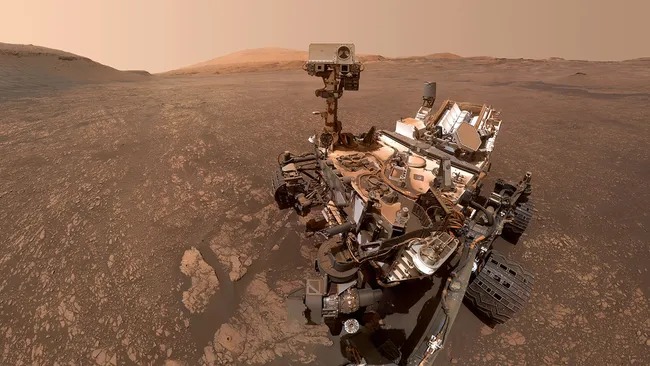Fri, Nov 10, 2023
Curiosity Continues the Search for Germs
NASA's handiwork continues to impress on Mars, with their Curiosity rover doggedly continuing on its mission past the 4,000th day on the planet since touching down on August 5th, 2012.

The Rover was originally sent to evaluate the possibility of microbial activity near the 3-mile tall Mount Sharp. The plan was for Curiosity to slowly inch its way up the mountain, using the layers of the rock to evaluate the Martial epochs as it went. The latest sample retrieved will hopefully show how the Martian climate evolved over time, particularly what happened to the once salty oceans of the basin.
“The types of sulfate and carbonate minerals that Curiosity’s instruments have identified in the last year help us understand what Mars was like so long ago. We’ve been anticipating these results for decades, and now Sequoia will tell us even more,” said Ashwin Vasavada, Curiosity project scientist at NASA’s Jet Propulsion Laboratory.
Curiosity will just "keep on keepin' on" in the traditional NASA sense, despite a couple niggles with the aged hardware as it continues to weather the harsh Martial seasons. Right now, one of its main 34mm mast cameras remains stuck between filter positions, affecting its image quality and limiting the mission to relying on its other 100mm focal length camera. The team continues to make minute nudging adjustments in the hopes the camera can push the filter back into position. Curiosity's power source should continue to work for "many more years" according to the lab, a prospect made even more likely with judicious piloting and additional software updates.
"They have also found ways to overcome challenges from wear on the rover’s drill system and robotic-arm joints. Software updates have fixed bugs and added new capabilities to Curiosity, too, making long drives easier for the rover and reducing wheel wear that comes from steering (an earlier addition of a traction-control algorithm also helps reduce wheel wear from driving over sharp rocks)."
More News
Its Offerings Are Lighter, Cleaner, and Now Pushing Past 1,000nm on SAF Jet Fuel DeltaHawk’s diesel-powered aircraft lineup has seen incredible upgrades over the last few yea>[...]
The Airplane Experienced A Total Loss Of Engine Power On December 3, 2025, about 1600 central standard time, a Mooney Aircraft Corp. M20K, N57229, was substantially damaged when it>[...]
Make Sure You NEVER Miss A New Story From Aero-News Network Do you ever feel like you never see posts from a certain person or page on Facebook or Instagram? Here’s how you c>[...]
Aero Linx: European Society of Aerospace Medicine (ESAM) As a pan-European, independent forum, it works to promote the safety and health of all persons involved in aviation and spa>[...]
“We are excited to see Wisk achieve this milestone, and I’m so proud of the team that made it possible. The team at Wisk has built advanced technologies across flight c>[...]
 Aero-TV: DeltaHawks Diesel Power Steps Into the Spotlight
Aero-TV: DeltaHawks Diesel Power Steps Into the Spotlight NTSB Prelim: Mooney Aircraft Corp. M20K
NTSB Prelim: Mooney Aircraft Corp. M20K ANN FAQ: Turn On Post Notifications
ANN FAQ: Turn On Post Notifications ANN's Daily Aero-Linx (12.20.25)
ANN's Daily Aero-Linx (12.20.25) Aero-News: Quote of the Day (12.20.25)
Aero-News: Quote of the Day (12.20.25)



